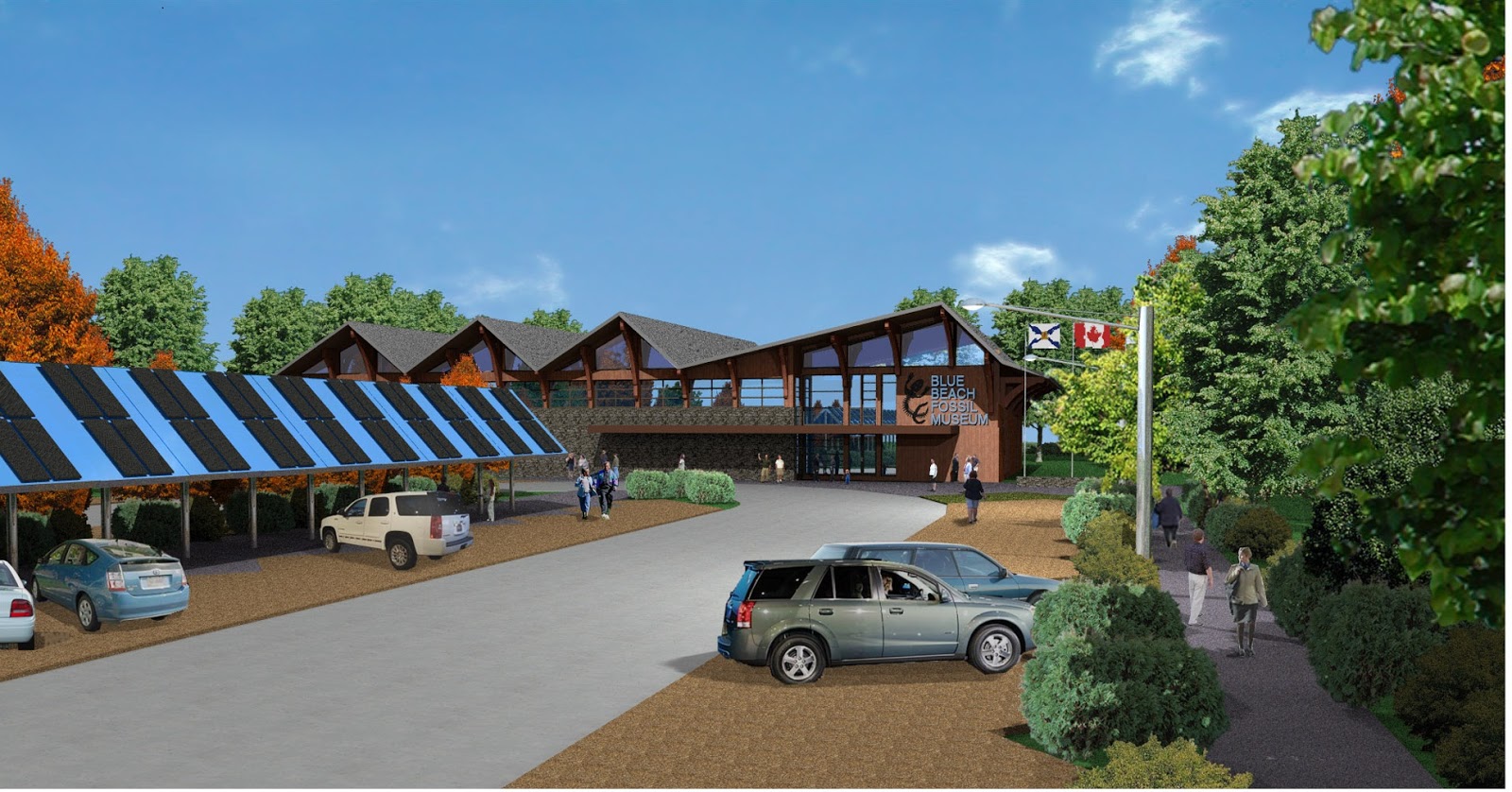Birthplace of Vertebrate Paleontology in Canada
Pioneer's of Life
on Land & The Tetrapod's
at
Blue Beach, Nova
Scotia Canada

The
birth of ‘vertebrate paleontology in Canada’ took place one fine day in 1841,
and it happened at Blue Beach, Nova Scotia (then known as Hortons
Bluff). Sir William Logan discovered fossilized
footprints of the first creatures, ever, to swim out of the water and walk on
land, the tetrapods. These Lower Carboniferous creatures were the first
air breathers of the
coal-period.

Logan,
a Scottish-Canadian geologist, was born April 20 1798 in Montreal and as a young
boy his family moved back to Edinburgh, Scotland where he got his
education. He
never forgot of his childhood in Canada and dreamed of returning one day.
Later, as a young man, he did returned to Canada and in 1842 was asked to
establish, and became the first Director of the Geological Society of Canada and
carried on as Director until
1869.

Sir William Logan
In various works between 1863 and 1896,
J. W. Dawson, the eminent maritime geologist and Nova Scotian, reported  on
the rich fossil assemblage at this beach…naming several plant species, several
new ‘trace’ fossil types (including Logan’s tracks, named Hylopus
logani), as well as a diverse fish fauna (with sharklike ‘acanthodians’,
primitive bony ‘ray-finned’ “palaeoniscoids”), and an impressive giant lobe-fin
“rhizodontid” fish that was then known by only a few scales and teeth, and by a
fragment of one lower jaw.
on
the rich fossil assemblage at this beach…naming several plant species, several
new ‘trace’ fossil types (including Logan’s tracks, named Hylopus
logani), as well as a diverse fish fauna (with sharklike ‘acanthodians’,
primitive bony ‘ray-finned’ “palaeoniscoids”), and an impressive giant lobe-fin
“rhizodontid” fish that was then known by only a few scales and teeth, and by a
fragment of one lower jaw.
 on
the rich fossil assemblage at this beach…naming several plant species, several
new ‘trace’ fossil types (including Logan’s tracks, named Hylopus
logani), as well as a diverse fish fauna (with sharklike ‘acanthodians’,
primitive bony ‘ray-finned’ “palaeoniscoids”), and an impressive giant lobe-fin
“rhizodontid” fish that was then known by only a few scales and teeth, and by a
fragment of one lower jaw.
on
the rich fossil assemblage at this beach…naming several plant species, several
new ‘trace’ fossil types (including Logan’s tracks, named Hylopus
logani), as well as a diverse fish fauna (with sharklike ‘acanthodians’,
primitive bony ‘ray-finned’ “palaeoniscoids”), and an impressive giant lobe-fin
“rhizodontid” fish that was then known by only a few scales and teeth, and by a
fragment of one lower jaw.
Sir John W. Dawson
The next major developments were the
1966 discovery of the first known tetrapod bone from the locality by
researcher Donald Baird, the 1972 publication of new information on the
vertebrate fauna by Robert Carroll of McGill, and the discovery of additional
footprint varieties by Sarjeant and Mossman (1978). The discovery
of additional tetrapod material stimulated interest in the site, leading to
numerous scientific papers on all manner of subjects save the most important
aspects of all…the tetrapods and the fishes themselves.

Dr. Donald Baird
Efforts to collect these bony remains
proved that they were indeed very scarce at the best of times. Skeletons
were not seen; rather one was dealing with loose scatters of isolated
elements.
After about 35 years of optimism about one day understanding this
vertebrate fauna, the key researchers would eventually conclude “…unfortunately,
the site would probably never yield anything more than a few enigmatic glimpses
at best” (Clack and Carroll, 2000 – “Amphibian Biology”).

Dr. Jennifer Clack 2011 veiwing
the tetrapod collection at Blue Beach, NS
Today beacuse of the efforts and
collecting (of these significant fossils) by citizen-paleontologist, Christopher
F. Mansky there is a
new understanding and appreciation for Blue
Beach as being truly a world-class fossil site. Widespread interest has been
generated by leading experts who now view the amassed collection as the global
standard. Blue
Beach has now shown that there were anywhere from 6-10 kinds of
tetrapods, making this an incredible diversity of early tetrapod life
considering the sparseness of other tetrapod knowledge during this ‘Romer’s
Gap’.
Clearly this collection of fossils, now exceeding 70,000 lbs, has opened
up about a hundred years of research.

Whereas the bony remains are
ultra-rare, the footprints are abundant. As noted in the attachments, this is
the oldest fossilized footprint collection in the
world, as well as the largest collection of
Carboniferous-aged tracks known today (the next largest collection to
compare being from that from the Union Chapel Mine site in
Alabama).
The newly-aquired but still-unpublished tracks recovered by the BBFM (in
the last 15 years) are the most important fossil-track discoveries of recent
times, and promise to act as a ‘rosetta stone’ for scientists interested in
deciphering the still much confused Carboniferous record of
tetrapod footprints.

Christopher F. Mansky - BBFM
Curator
The study of these Carboniferous tracks
has been muddled mostly by uncertainties stemming from the smallness of those
previous collections. In view of new, important
early-collections (such as the Blue Beach, Union Chapel Mine
and Pottsville assemblages) having come to light within the last two decades, a
long-awaited review of this field of science (tetrapod ichnology) is ripe, with
the Blue Beach collection playing the most crucial part. (BBFM is
partnering with Spencer Lucas, footprint expert from the New Mexico
Museum of Natural History in this review).

Dr. Spencer Lucas, New Mexico Museum of
Natural History

www.bluebeachfossilmuseum.com
Excited Students Want A Paleo-Centre.- Blue Beach Fossil Site, Nova Scotia
Excited Students Want A Paleo-Centre.- Blue Beach Fossil Site, Nova Scotia

Comments
Post a Comment